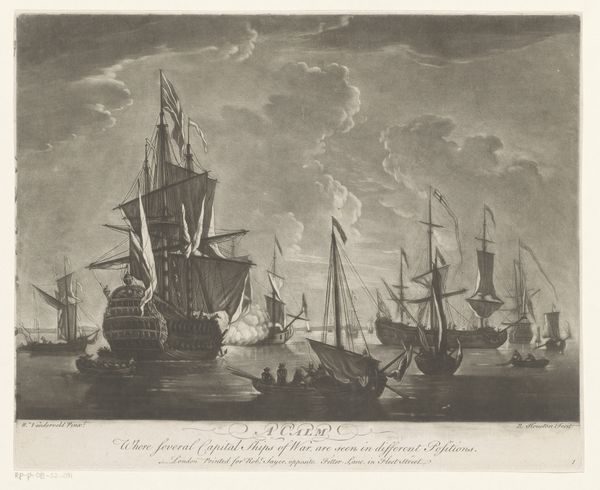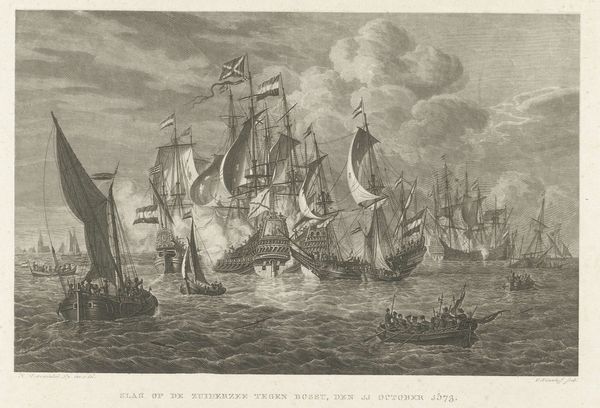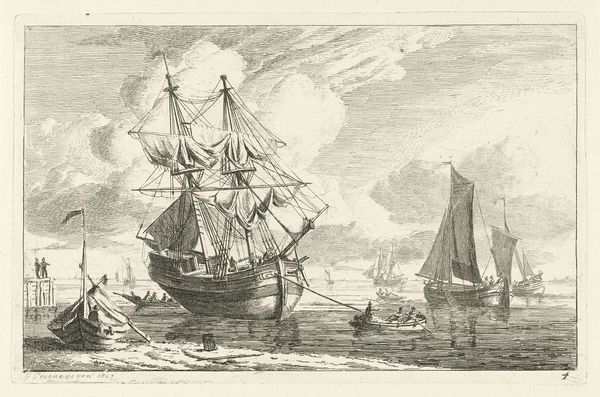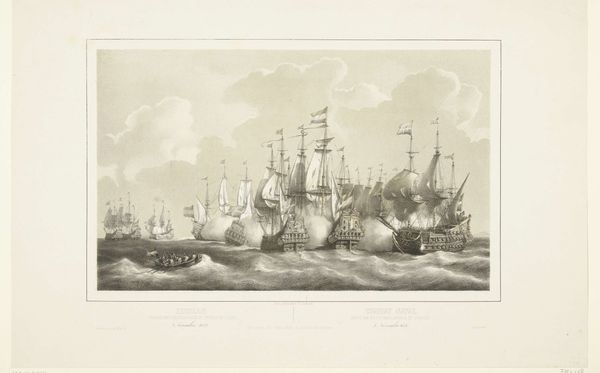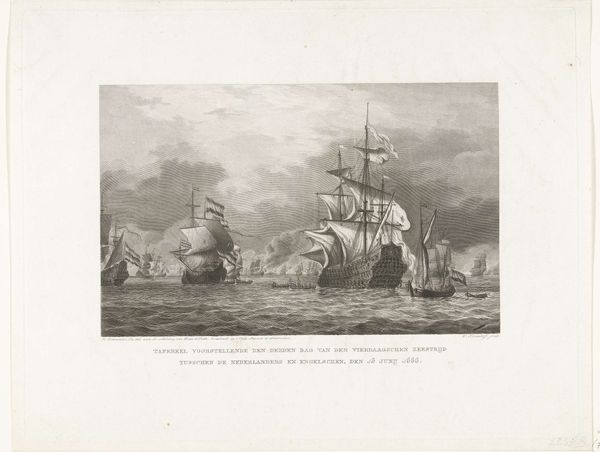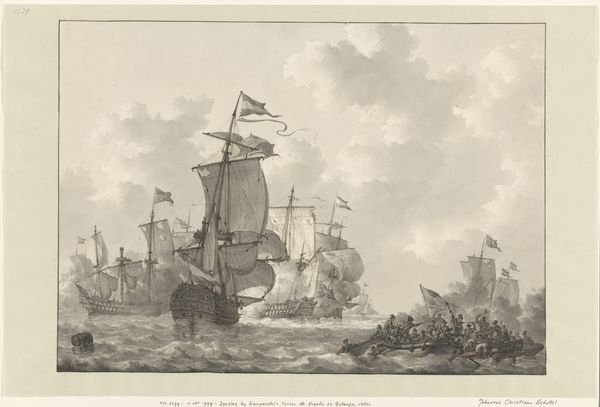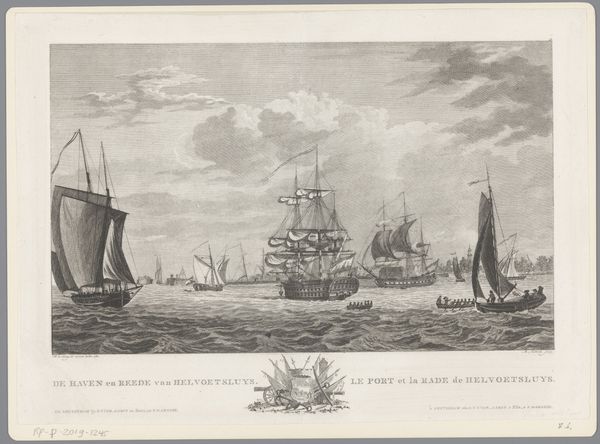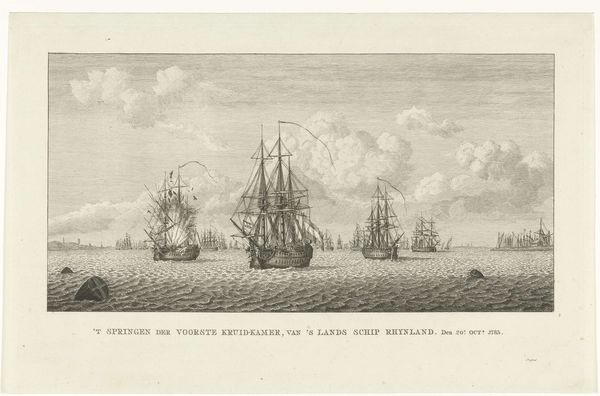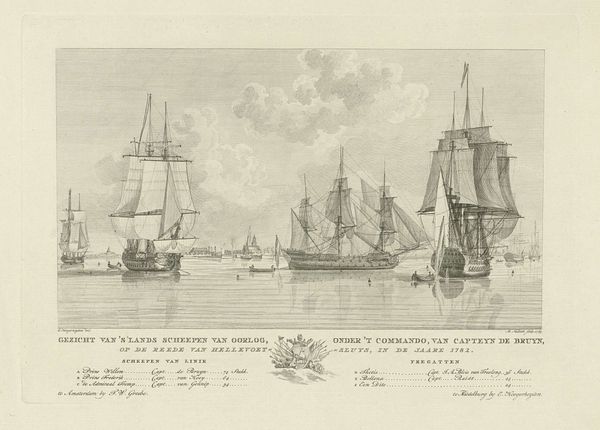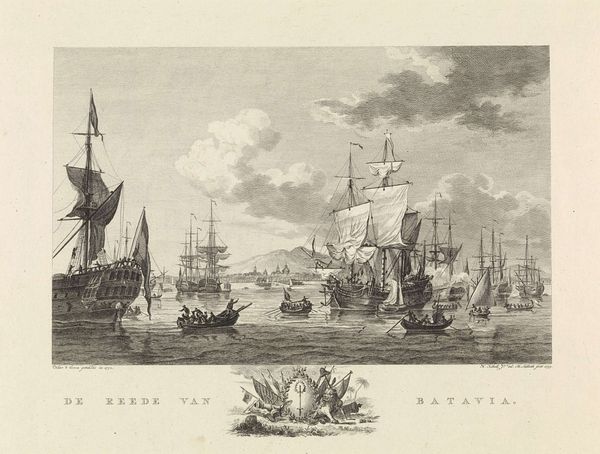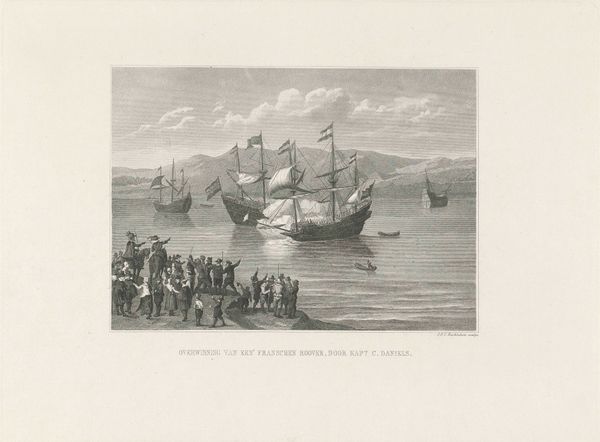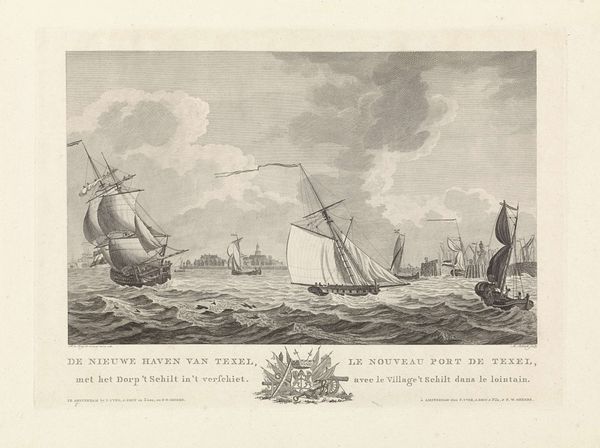
Dimensions: height 352 mm, width 526 mm
Copyright: Rijks Museum: Open Domain
Curator: This engraving, rendered between 1853 and 1855, depicts the “Zeeslag bij Duins, 1639” now held at the Rijksmuseum. It’s an evocative piece in the Baroque style. Editor: Wow, just look at that intense atmosphere! You can almost smell the gunpowder and feel the spray of the sea. The limited monochrome palette amplifies the chaos; it's all lines and shades depicting a real clash of wills. Curator: Indeed! The line work is exquisite, capturing not only the drama of naval conflict but also embedding the scene within its historical moment. This print highlights a decisive Dutch victory. We are reminded of the intricate dance between empire, commerce, and military power. Editor: And notice the small figures in boats – dwarfed by the immense warships locked in combat. There is a raw depiction of individual vulnerability versus these titans of naval warfare. The cityscape fades almost to the background, almost inconsequential to what appears to be complete destruction, just out at sea. Curator: Exactly. While appearing observational, works like this always construct specific narratives. How does this image function to further entrench Dutch identity, particularly during the rise of national consciousness in the 19th century when this print was produced? It may offer a lens into contemporary power dynamics, perhaps even challenging existing colonial hegemonies through revisiting the glory days. Editor: A lot to unpack there, for sure! For me, the piece feels more immediate. The fog of war and that slightly aged paper lends a visceral authenticity to this portrayal. Despite its graphic quality, there's something romantic, even melancholic, about the scene. As a study of power and impermanence it certainly feels complete. Curator: I see that now, the contrast is pretty thought-provoking. It speaks to the ever-shifting tides of fortune and influence on an individual scale. The drama might distract some from contemplating more deeply the sociopolitical consequences that such clashes generate, especially considering that our contemporary global order can be traced back to many of these types of conflicts. Editor: I like your broader understanding there; that contrast really encapsulates so much tension. Perhaps its monochrome look gives us something we could all reflect upon today, from various differing vantage points, given that all we will ever know is different angles of grayscale understanding.
Comments
No comments
Be the first to comment and join the conversation on the ultimate creative platform.
